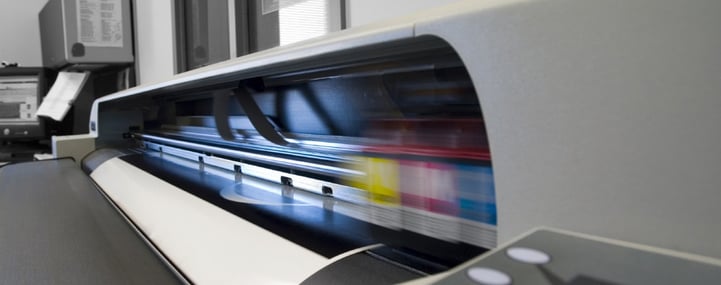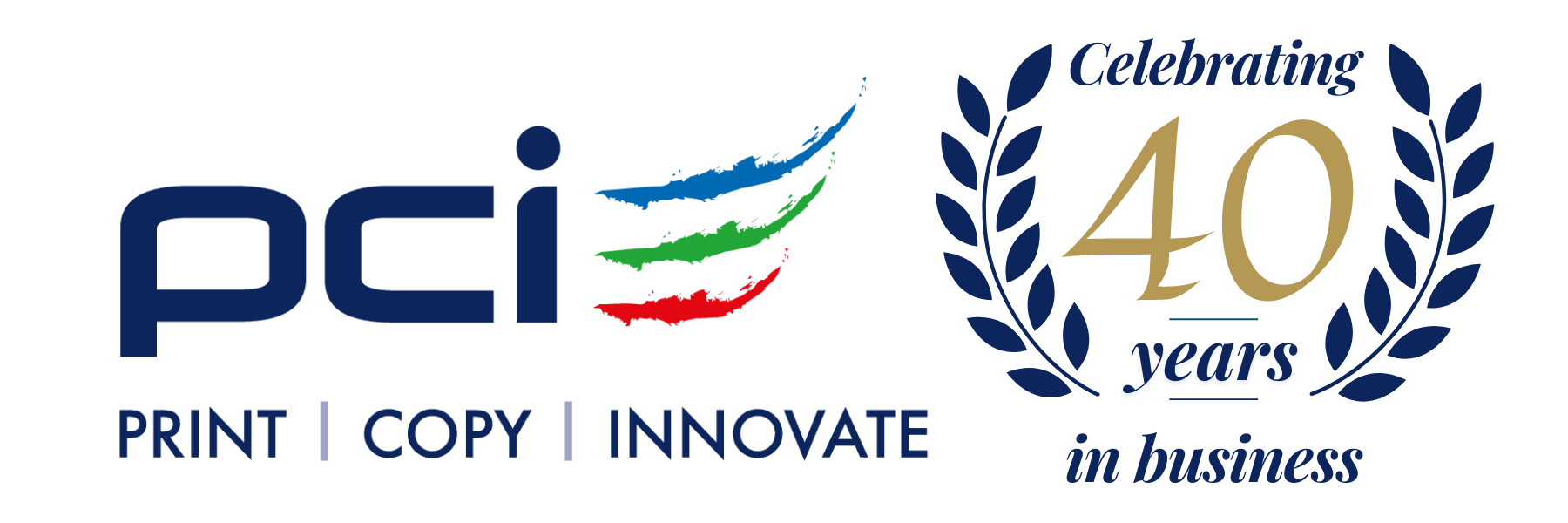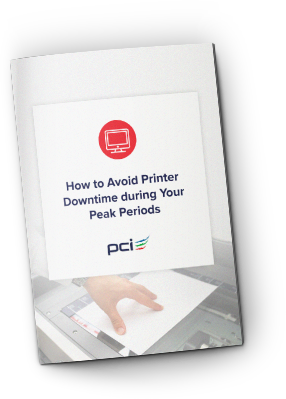
MPS has been around for about 15 years, though it’s grown in increasing popularity over the past 5-7 years. MPS provides business owners and office managers with the capability to electronically capture and closely monitor their print output (and costs) via automated machine meter readings. MPS technology is consistently evolving, enabling service providers to help customers operate their offices more efficiently and cost-effectively by securing user information that could previously only be manually collected and so was cost-prohibitive. But as well as providing instant, smart data collection, MPS also provides users with super-helpful insights (by way of detailed analytics reports) and assessment tools, putting the power back into the hands of the office manager to reduce and control costs. Jackpot!
Managed Print Services allows customers to make more informed decisions about their print infrastructure and regulations. Although there’s an initial outlay to be considered in setting up an MPS for your organization or business, you’d be amazed at how much money can be saved over the medium-to-longer term. MPS has proven to re-shape user print behaviours and put print controls in place to minimise wastage.
So what is the best practice for managed print services?
Since 2000, consistent metrics and strategies have surfaced, fostering more effective optimization of printing and copying environments, indicating the adequate employee-to-device ratio for different office types and implementing other strategies for successful cost-reduction programs.
- Start by working with a dedicated Managed Print Services Specialist
Although it is relatively easy to collect and analyze data with the advancement of meter technology, when it comes to a successful MPS deployment, the implementation process is paramount for success. However, without the benefit of having proven practices and processes in place to communicate the new print policy, manage the customer workflow and efficiently execute the day-to-day details, an MPS deployment is destined for (expensive) failure. Integrating technology and leveraging automation rather than relying on people for everyday management improves accuracy, decreases response time and reduces overhead and waste while enhancing customer profitability.
Obviously, every MPS deployment is much larger in scope than simply replacing a faulty device or two. With the proliferation of MPS, many providers convey a “we can do that too” sales approach, often overstating their own capabilities or setting unattainable customer expectations. There are often many moving parts in an MPS engagement, so it is critical to provide documentation to appropriately manage customer expectations, clearly define deliverables and mitigate as much risk as possible. Having a clearly defined and documented scope of work creates an expectation level for both entities while establishing a clear path for success.
- Smart machines with automated electronic meter collection will keep devices running 24-7
Automated electronic meter collection gives you user printing and copying insights. Smart machines can integrate into additional back-office systems to allow you to more effectively monitor toner levels (for pre-empting delivery requirements), service tracking, billing, data analysis and overall management of customer print environments.
A key element in the evolution of MPS is the just-in-time delivery of supplies on a device-by-device basis. Rather than having a stockroom full of backup or even outdated toner supplies, remote monitoring provides real-time intelligence while calculating when devices will require toner replenishment. As a result, providers “learn” usage patterns by tracking previous use to automatically predict when to ship toner.
This type of analytics is much more accurate than relying on “toner low” warnings devices give, as this indicator has proved to be very unreliable. On the other hand, a just-in-time delivery model facilitates the direct shipment of toner to the end user to help ensure uptime. Leveraging technology rather than “the human element” increases reliability and accuracy while reducing costs for both the provider and customer.
- Work with an MPS Specialist to get up-and-running as soon as possible
Using technology to collect data provides credible information with which to analyze — whether obtained directly from a print device, print server, computer or mobile device — or map the customer environments while doing a physical or virtual walk-through.
Although much MPS strategy centers on the hard, visible costs of larger companies, smaller companies also benefit from the convenience these solutions provide. Companies large and small alike prosper from working with a single provider versus interacting with multiple vendors.
Moreover, outsourcing services related to print, copy and fax devices to trained MPS professionals affords end users the convenience of just-in-time delivery service for supplies and remote monitoring for preventative maintenance and scheduling. Such services greatly reduce capital and operational expense while improving the end-user experience.
Typically, a provider would need processes and tools to effectively collect and analyze a customer’s print data. These tools may range from the use of paper, pen and a floor map to more sophisticated tablet technology that can synchronize electronic meter data with physical GPS coordinates on floor plans.
- Lock in a best-in-class service level agreement
Much like the hospitality and restaurant sectors, service is also vital for any successful MPS implementation. Since MPS has been embraced by larger organizations, it is increasingly important to have national and even global service management capabilities and technicians who are trained on the equipment being used. Often local providers are restricted by a limited service reach and have difficulty implementing reliable MPS programs for organizations with multiple locations.
As small, midsize and large businesses all have distinct nuances, providers must address these varied needs by dispatching trained technicians for on-site repairs, device maintenance and performance analytics for all customer assets via one point of access.
As important as it is for the provider to use this information, it is equally important for the customer to have transparent access to the same data so collectively the two can work together toward ongoing fleet improvement and issue resolution.
- Consistent close monitoring of printing and copying costs
You can also get a realistic picture of how many colour copies versus black-and-white copies your office runs over a daily, weekly, monthly, quarterly and/or annual period.
As data is collected and examined, MPS professionals analyze the information, develop cost profiles for the assets, detail the total cost of ownership, then provide a current state — or baseline — analysis of the customer’s current print fleet. Once a baseline is established, the process of improvement may begin. Results of the MPS program will be measured against this benchmark in the future.
We hope this articles brings you clarity around the MPS process. While it’s not an inexpensive project to implement, the rewards far outweigh the effort.
Want to learn more about Managed Print Services?
If you're interested in getting a Managed Print Service Quotation for your business, contact our team today at +353 (0)1 8482900 | sales@pcigroup.ie and we'll set up your personal consultation.


